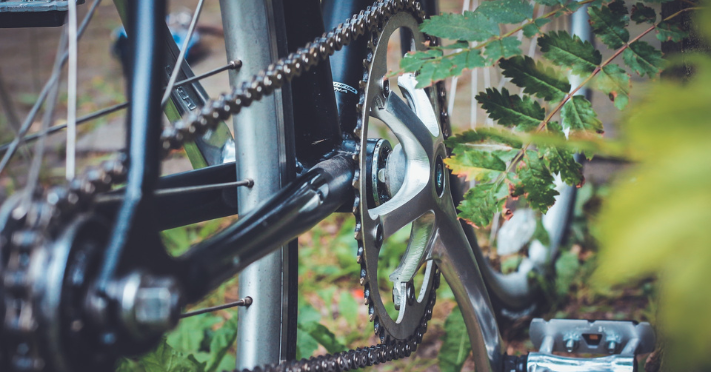Until only a couple of months ago, you had a choice between a hub gearing system and a derailleur system. With the launch of the Classified Powershift this year, a third system has come on the market that is set to revolutionize top-end bicycle drivetrains – the hybrid hub/derailleur.
Premium E-Bikes Only
If you look at an e-bike costing $5,000 or more and say “WTF!” before opting for a less expensive machine, this is not really for your eyes! The SRAM GX Eagle derailleur system alone retails for around $600, similar to the Enviolo CVP (continuously variable planetary) transmission. The Classified Powershift costs more than many complete e-bikes – at $3,500!
The Enviolo and SRAM GX Eagle drivetrains all sell well and can be found on a number of e-bikes starting in the $5,000 range. Classified has partnered with a number of leading European cycling brands and is unlikely to just disappear overnight, but we won’t likely see its novel gear system on e-bikes for a few years yet.
Derailleur: Tried-and-True Tech

With the exception of single-speed e-bikes, you will find a derailleur system on the majority of machines on the road today. It involves five principal parts – the shifter, cable, chain, cassette and derailleur. The shifter pulls the cable, which moves the derailleur, which shifts the chain up and down the cassette to help you get the right gear ratio.
This system has been on bikes for just over 70 years, with the first basic derailleur used in the 1949 Tour de France when professional cycling finally took notice of it.
With such a long time as the main drivetrain for race bikes, it is of no surprise that there is a wide range of systems available in terms of both cost and technology. A bottom-dollar drivetrain can cost less than $100; you can also pay well over $1,000 for a high-end system.
A derailleur system can be extremely light, with SRAM GX Eagle weighing just 2½ lbs including the shifter, derailleur, chain, and cassette. To compare, the Enviolo CVT is about 5½ lbs.
SRAM GX Eagle is one of the leading drivetrain systems on electric mountain bikes. Lightweight and offering a big range of gears, it allows you to tackle steep inclines and accelerate hard downhill as required.
Continuously Variable Planetary Transmission

The derailleur system hasn’t always been the only transmission available. Various hub systems have been used for at least as long. Around the same time as e-bikes matured as a technology, the continuous variable planetary transmission system (CVP) came to market.
A CVP system uses a belt drive, instead of a chain, and a series of bearings to offer an unlimited amount of ratios. By comparison, a derailleur system might offer 12 ratios on the more expensive setups. See this video to understand how it works.
The big selling point of this transmission system is that it requires almost zero maintenance for the life of the machine, and as such it has become popular on commuter and trekking bikes. E-bike share company Lyft uses the Enviolo CVP system in its e-bikes in New York, Chicago, San Francisco and other cities for this reason.
Where the CVP requires almost no maintenance, you will need to keep the derailleur system very clean and maintained to keep it on the road. If it ingests enough mud, very few derailleur systems will survive – the CVP is impervious to mud ingress because it is sealed.
CVP systems are most suited to e-bikes as they have a certain amount of friction that is noticeable compared with a derailleur. With the e-bike motor helping you along, this is less noticeable, but when you run out of juice it will add to the slog of heading home.
Hybrid: The Future?

Newly out of stealth mode, Belgium-based Classified is threatening to take the cycling world by storm with its hybrid drivetrain system. We won’t see it on e-bikes for a few years yet as the technology is very expensive – for a rear wheel with it, expect to pay north of $3,500!
What you get for this jaw-dropping price is a system that significantly increases the number of ratios available on a cassette without having a double-chainring crankset. Essentially a derailleur system with a two-gear rear hub gearbox, it enables each cog on the cassette to have two ratios.
The nearest transmission to the Classified on e-bikes is the Shimano Di2 electronic shifting system found on the Bianchi Aria Road Di2. The Classified Powershift uses an electronic system that can switch between 46% of ratios in 150 milliseconds, so within the bat of an eye you’re in the next gear as you shift to suit different gradients.
It’s also quite light at just under 1.5 lbs for the hub and cassette combined.
Currently, Classified is working on traditional bikes and establishing its position at the elite end of the market, and the MTB version is due for release in May this year. Will we see European Grand Tour riders using it soon? From elite road bikes it will filter down to premium e-bikes, though don’t expect to pay much less than $10,000 for an e-bike with the Classified system.
Ever-Moving Technology
In this article, we haven’t touched on the Rohloff Speedhub rear hub gear system that is well-proven on more expensive e-bikes. This is similar to that of the Classified Powershift system but weighing in at almost 7 lbs. It is however a well-proven and widely loved transmission for overlanders thanks to being almost bombproof. If you were to retrofit it to your existing e-bike it would cost $1,000 plus labor for installing it.
With the Rohloff transmission already making waves, there is room for Classified to maneuver into the e-bike market in the next few years. The Classified system is much lighter and offers more ratios.
One thing is clear, though, as e-bike technology improves in the coming five to ten years, the pure derailleur system is unlikely to totally rule the roost. Already the Enviolo system is beginning to push the derailleur aside in some segments of the market, and other systems will begin to do the same. What will the $5,000 e-bike look like in five years’ time? That’s anyone’s guess!



